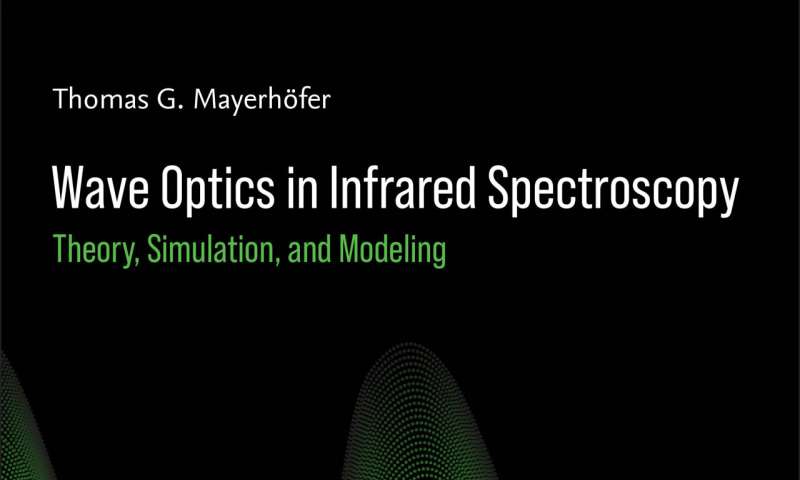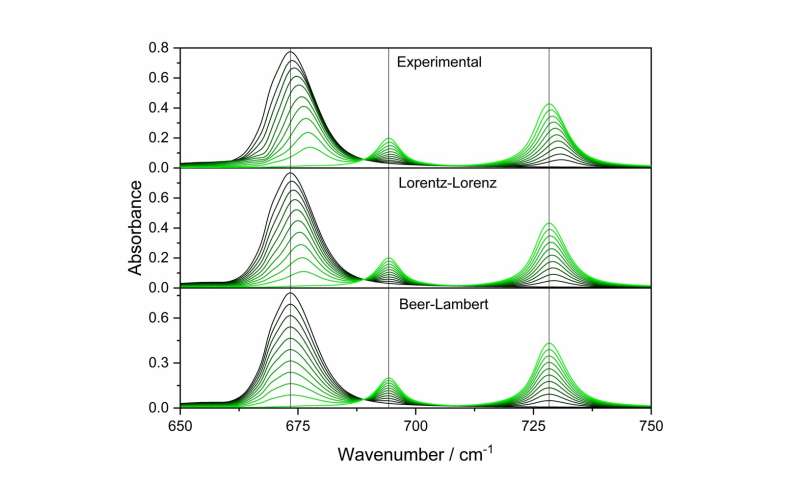New book reveals undiscovered potentials of infrared spectroscopy through wave optics

A new book on infrared spectroscopy picks up where all previous books leave off. Jena-based scientist PD Dr. Thomas Mayerhöfer has written the first book on infrared spectroscopy that explains spectra and their special features exclusively with the help of wave optics and dispersion theory. Previous approaches were mainly based on the Beer-Lambert approximation and neglected the theory of wave optics.
The book, "Wave Optics in Infrared Spectroscopy: Theory, Simulation, and Modeling," does away with this simplification and opens the view to undiscovered potentials of infrared spectroscopy.
Infrared spectroscopy has been known for more than 120 years and became a routine technique about 60 years ago. The first books on infrared spectroscopy were published nearly 100 years ago and have been followed by numerous successors.
All previous approaches inherently rely on the Beer-Lambert approximation, while the much more advanced wave-optical theory was only occasionally included. The dominance of the Beer- Lambert approximation is remarkable because wave optics and modern dispersion theory were developed at about the same time as infrared spectroscopy.
The Beer-Lambert approximation is a simple formula that describes how light intensity decreases in a medium and how this decrease depends on concentration. However, it does not take into account more complex optical phenomena such as reflection, interference, and scattering, which can be more accurately described using wave optics.
"There are many so-called artifacts in infrared spectra that can only be explained by wave optics and dispersion theory," explains Thomas Mayerhöfer, the author of the new book. "The Beer-Lambert approximation is an oversimplification and hinders the understanding of the wealth of yet unknown possibilities offered by infrared spectroscopy. I hope that my book will help to address this issue."
Mayerhöfer is a recognized expert in spectroscopic theory and has contributed to the advancement of IR spectroscopy with more than 100 published articles.

Future standard textbook for infrared spectroscopy
The book features a foreword by Prof. Isao Noda, the inventor of 2D-correlation spectroscopy. Noda predicts that it will become a standard reference work for the field of infrared spectroscopy: "It is an essential resource for anyone who wants to develop a deep understanding of this important technique."
"Wave Optics in Infrared Spectroscopy: Theory, Simulation, and Modeling" includes 16 chapters, covering basic and advanced topics such as strong coupling, micro-homo- and heterogeneity, optical anisotropy and vibrational circular dichroism. It is intended to facilitate the transition from the Beer-Lambert approximation to wave optics and dispersion theory.
More information:
Thomas G. Mayerhöfer, Wave Optics in Infrared Spectroscopy (2024). DOI: 10.1016/C2023-0-00262-X
Provided by Leibniz-Institut für Photonische Technologien e. V.